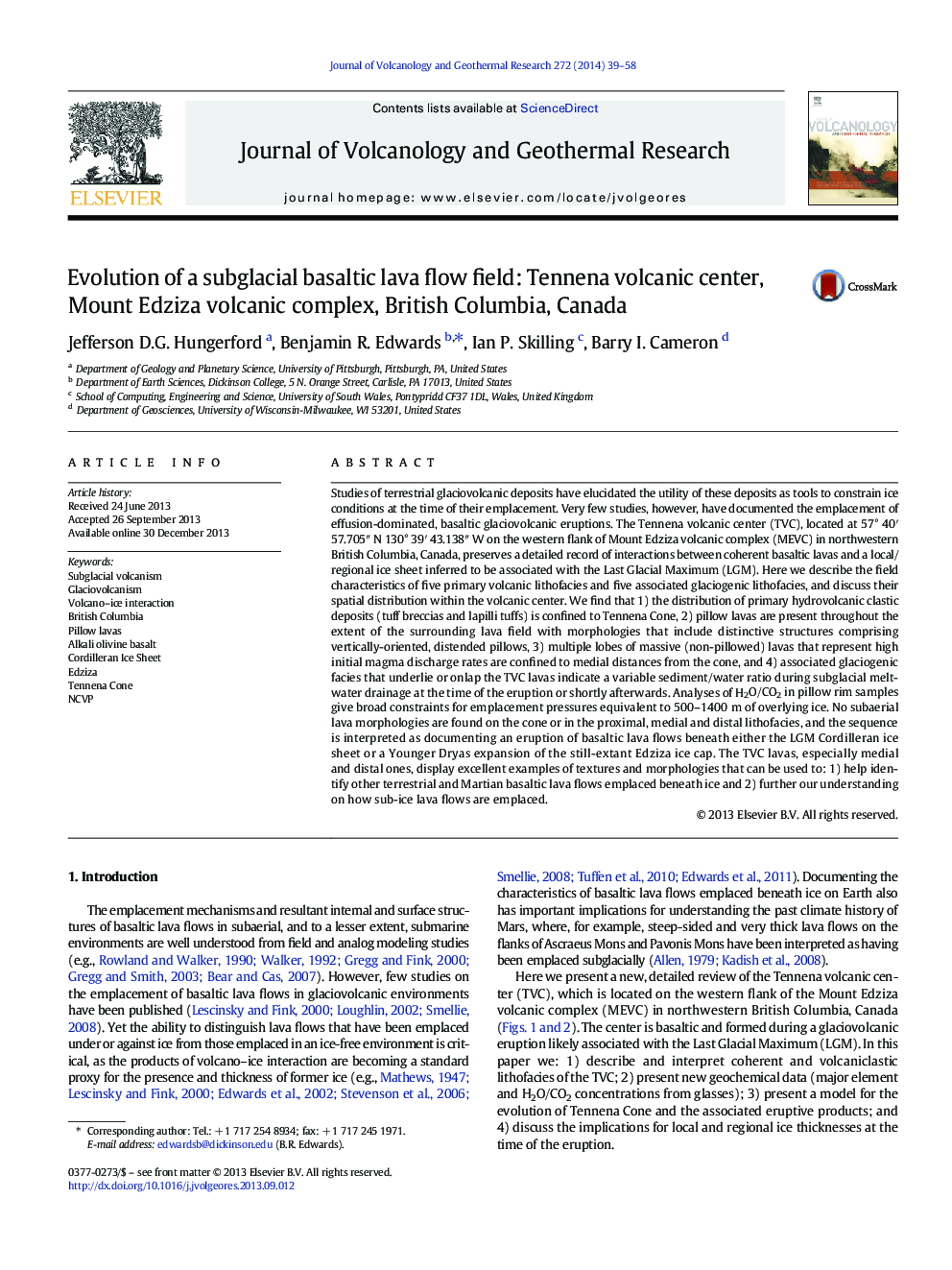| کد مقاله | کد نشریه | سال انتشار | مقاله انگلیسی | نسخه تمام متن |
|---|---|---|---|---|
| 4712411 | 1638349 | 2014 | 20 صفحه PDF | دانلود رایگان |

• The TVC preserves a detailed record of interactions between basaltic lava and a thick ice sheet over a subaqueous eruption.
• Field characteristics and spatial distributions of volcanic and glacigenic lithofacies record in detail changing syn-eruption conditions.
• The presence of pillow lavas throughout the TVC indicate that the entire complex was at least periodically subaqueous.
• Unique, vertical pillow lava structures may demarcate lava-ice contacts.
• Lava flow morphologies and structures found at the TVC are distinctive and should be recognizable using remote sensing of other suspected glaciovolcanic deposits on Earth and Mars.
Studies of terrestrial glaciovolcanic deposits have elucidated the utility of these deposits as tools to constrain ice conditions at the time of their emplacement. Very few studies, however, have documented the emplacement of effusion-dominated, basaltic glaciovolcanic eruptions. The Tennena volcanic center (TVC), located at 57° 40′ 57.705″ N 130° 39′ 43.138″ W on the western flank of Mount Edziza volcanic complex (MEVC) in northwestern British Columbia, Canada, preserves a detailed record of interactions between coherent basaltic lavas and a local/regional ice sheet inferred to be associated with the Last Glacial Maximum (LGM). Here we describe the field characteristics of five primary volcanic lithofacies and five associated glaciogenic lithofacies, and discuss their spatial distribution within the volcanic center. We find that 1) the distribution of primary hydrovolcanic clastic deposits (tuff breccias and lapilli tuffs) is confined to Tennena Cone, 2) pillow lavas are present throughout the extent of the surrounding lava field with morphologies that include distinctive structures comprising vertically-oriented, distended pillows, 3) multiple lobes of massive (non-pillowed) lavas that represent high initial magma discharge rates are confined to medial distances from the cone, and 4) associated glaciogenic facies that underlie or onlap the TVC lavas indicate a variable sediment/water ratio during subglacial meltwater drainage at the time of the eruption or shortly afterwards. Analyses of H2O/CO2 in pillow rim samples give broad constraints for emplacement pressures equivalent to 500–1400 m of overlying ice. No subaerial lava morphologies are found on the cone or in the proximal, medial and distal lithofacies, and the sequence is interpreted as documenting an eruption of basaltic lava flows beneath either the LGM Cordilleran ice sheet or a Younger Dryas expansion of the still-extant Edziza ice cap. The TVC lavas, especially medial and distal ones, display excellent examples of textures and morphologies that can be used to: 1) help identify other terrestrial and Martian basaltic lava flows emplaced beneath ice and 2) further our understanding on how sub-ice lava flows are emplaced.
Journal: Journal of Volcanology and Geothermal Research - Volume 272, 15 February 2014, Pages 39–58